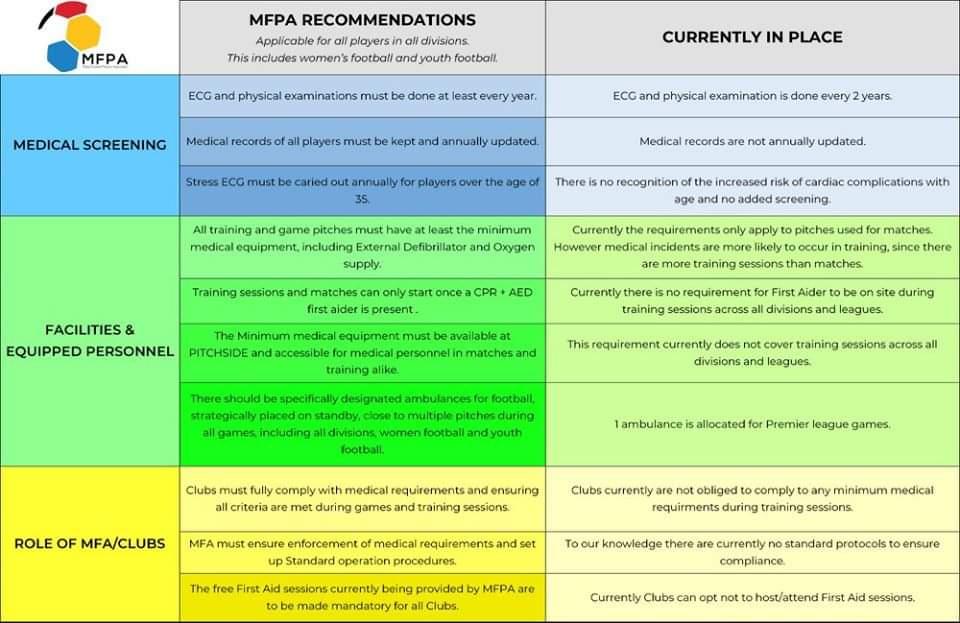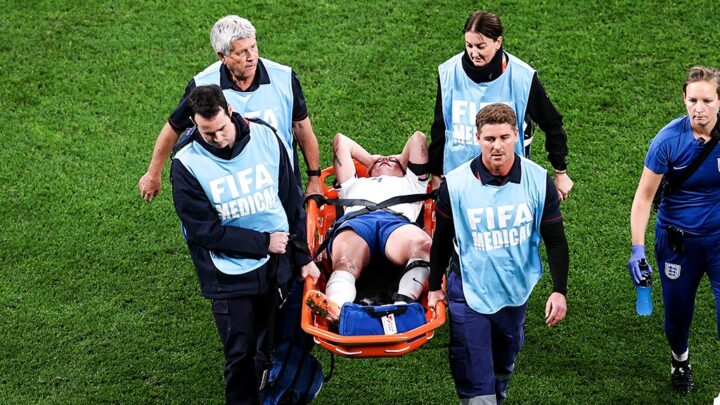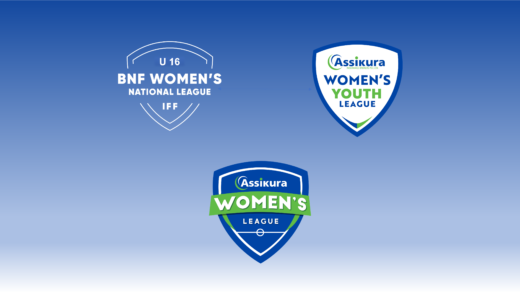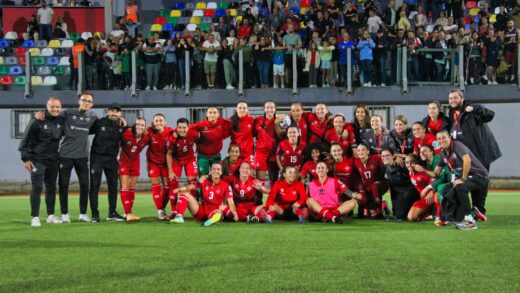Developing players to the highest possible calibre is an important priority to ensure a brighter future for football in Malta. However, the growth of the game expands beyond this. The need for a revision in safety procedures, improved training and resources cannot be papered over any longer.
Injuries Will Happen
Maltese football has seen an increase in the enlisting strength & conditioning coaches, physiotherapists and doctors, as more attempt to give the best possible care to players in effort to reduce injuries and speed up recovery. Despite this, the contact nature of the sport means that collisions and injuries will happen. Unfortunately, at times, incidents observed during games call into question the regulations and procedures related to health & safety during matches and beyond.
To give a few examples from the Assikura Women’s League, the televised incident of Swieqi United’s goalkeeper Cynthia Konlan’s injury made obvious the poor handling of such situations, even with the potential of a high viewership. In a high-stakes fixture against Birkirkara, the Ghanaian international was essentially knocked out by a challenge, thus requiring immediate attention. As expected, she was first given on-pitch treatment by the club’s first-aider, however the severity of the situation called for further medical support. This was were things started to spiral downhill.
She was stretchered out by her teammates which was followed by an outburst from club staff members at the officials because of the lack of a paramedic on site. The outburst could have been handled better, but one questions why there was the need for it in the first place. Luckily, on the day club had the strength and mental preparation coach, Dr Nigel Camilleri, on standby. He stepped in as replacement to the external paramedic to give additional support until the ambulance arrived, by which point the match had ended. As will be noted below, the presence of such a medical professional is the exception, not the rule.
In another match involving separate teams, a player suffered a head injury that demanded immediate attention. Following a few minutes of indecision by the referee to stop the play, the first-aider confirmed she would need to be substituted out, but the player’s condition worsened steadily before she was finally escorted out from the stadium. The Sporting Fan understands that the decision on the bench was to call the player’s parents rather than to immediately call an ambulance. One questions why the play was not immediately stopped and why once the situation worsened, the solution was not to call for medical assistance but to instead wait for the parents to make that decision. The player thankfully recovered after some weeks, but things could have had a more somber end.
In another case, The Sporting Fan was quite confused to see a first aider run over to a player who had just sustained an injury and then ask bystanders from where they can find ice. The direction from those present was to “get ice from the (snack) bar”. Ice is one of the more basic tools used by first-aiders, so one questions how the first-aider did not sort out this supply beforehand. One may chuckle at the ridiculous nature of that situation or even dismiss it by saying that icing is a simple thing and so probably the injury was not too critical. In the face of this, perhaps it is worth noting that this was a case when everyone was helplessly looking at a player writhing on the floor in pain, knowing that the three dreaded letters (ACL) have knocked on her door once more.
A look into the regulations of health and safety in these competitions, i.e. personnel that should be available, their training, and the minimum medical equipment they should have, suggests that though work has been done, there is room for improvement.
What are the Requirements of Health & Safety in Maltese Football?
According to the Competition Rules listed by the Malta Football Association (MFA), section 8A “Clubs are obliged to ensure that at their competitive matches, at least one person from the non-playing technical staff listed on the match sheet is certified in first aid”. The fine for failing to do so is just between 50 and 125 Euro for the first offence, which may reach up to 200 Euro for every subsequent offence in the same season.
One notes that according to these regulations, currently clubs are not required to provide a doctor during matches. Actually, there is no regulation that requires a doctor to be present at all, not even from MFA’s side or according to Maltese law. Despite this, the ‘Head Injury Procedure’ section 21A, one notes that the regulations state, “In the event of a suspected concussion, the referee will stop the game to allow the injured player to be assessed by the team doctor.”
In discussing this latter criterion with personnel from within the MFA the explanation received was that, in the event that a team doctor is present, the regulation gives them authority in the situation but it does not in any way mandate that a doctor must be present. Furthermore, it noted that despite not being listed in the regulations, efforts had been made to introduce an external paramedic (additional to the first-aiders provided by the clubs) who would be available during matches to assist in emergencies until an ambulance arrives. While the scarcity of human resources is a real issue, the examples listed above suggest that the enforcement of the presence of this paramedic requires some attention.
On the other hand, The Sporting Fan’s probes to clubs on whether they enlist doctors were largely met with feedback that they are only required to provide a first aider during matches. In a few cases, certain clubs said that they have a team doctor who assesses things following the match.
MFPA Urges Resumption in Talks
The Sporting Fan contacted members within the Malta Football Players Association (MFPA) for comment. The MFPA noted that it made several recommendations in 2019 (listed in the image below). Though it is understood that improvements in medical screening have been made, the recommendations in the sections related to ‘Facilities & Equipped Personnel’ as well as those listed under the ‘Role of MFA/Clubs’ are still not implemented.

The MFPA noted that amongst its chief concerns was that although it offers free first-aid training sessions, the full eight-hour course is not mandatory for clubs. Considering the absence of a mandatory team doctor, it is even more important that first-aiders are properly trained, but it cannot enforce this without the support of the MFA and the Clubs.
When presented with the examples mentioned above, the MFPA also raised the concern that there is also no current regulation to have first-aiders and AEDs (defibrillators) available during training. Ultimately, players spend more time in the training grounds than in competitive matches. The MFPA noted that ideally this would be adopted across all levels, including youth ages, but acknowledged that considering the limited resources it may need to be gradually introduced. One example could be to start from the training sessions pertaining to major leagues including the Men’s Premier League and Women’s Senior League, and then filter to the Challenge League etc.
Asked about the current status of discussions, the MFPA responded that the discussions are at a standstill.
Seeking a Professional’s Opinion on First-Aid Equipment
The Sporting Fan sought answers from the Chief Medical Officer within the MFA, Dr. Daniel McKean. He overlooks the medical needs of the women’s, men’s, futsal and beach soccer national events. In discussion, Dr. McKean noted that the Medical Committee cannot enforce or introduce regulations of the competitions but can only provide professional medical advice and guidelines.
Among the points of interest was whether there exists an enforced minimum list of items that a first-aider is expected to have in the first-aid kit-bag during a local league competitive match. Dr. McKean noted that though there was a set of guidelines that was distributed to the clubs, the medical committee is limited in enforcing a strict regulation. He elaborated that some of the items in a first-aiders bag may be of a personal preference, but that at minimum there should be a swab to deal with bleeding. Dr. McKean suggested that besides this, the first-aider should check that they have everything in the ‘Medical Room’ and they know where the AED (defibrillator) is.
The Sporting Fan understands that following discussions between the involved parties, there was an agreement that pitches utilised for competitions should be fitted with a ‘Medical Room’. This should contain all the critical medical equipment needed until an ambulance arrives at the scene. Queries as to why ambulances are only available during men’s Premier League matches, were met with responses that the ambulance is only dispatched if a sufficiently large crowd is present and that there is also a country capacity limit to be considered. Thus, considering the small size of Malta and the limited resources, the idea of a medical room was devised, which should be equipped to administer any first aid until the ambulance arrives on the scene.
According to the MFA, medical rooms are equipped and maintained as part of an agreement similar to that governing the AEDs, with the MFA essentially renting out the equipment for an agreed period covered by a tender. The equipment present within these medical rooms is sufficient for use by trained first aiders and medical professionals in the case of an emergency.
According to the list provided by the MFA, the grounds fitted with this medical room are those in: Hamrun, Luxol, Sirens, Kirkop, San Gwann, Mosta, Zebbug, NSS (Pembroke), Rabat and Mgarr. This besides the stadia that are directly under the MFA’s remit i.e. the National Stadium and the Centenary Stadium at Ta Qali’.
Probes on the day-to-day management of these medical rooms also led to the admission of the difficulties involved. In discussion with separate members of the MFA, it was noted that the supplier’s human resources are also limited. They acknowledged that though efforts are made to check in, sometimes they receive reports of items missing.
When the point of stocking and maintenance of these medical rooms was brought up in the discussion with Dr. McKean, he encouraged first-aiders to take a stand if any critical item was missing and alert the referee to consider postponing the start of the match until such items could be sourced. When presented with the incident noted above, where the first-aider was directed to get ice from the snack bar, Dr. McKean replied that the source of the ice was not a problem in itself, but questioned why the first-aider had not secured ice pitch-side prior to the match. As a medical professional one makes sure that they have all the equipment they need prior to the match. By extension, he said one would expect that the first-aider understands their responsibility and so would approach the match with the same professionalism.
Is a doctor needed to diagnose concussion on the pitch?
The Sporting Fan also spoke with Dr. McKean on the procedures related to a concussion, particularly its diagnosis and effects. He said, “A concussion affects function. So, it can affect vision, balance, coordination and even behavior. From studies we know that children are most prone to concussion, then women and then men. People who have already suffered a concussion are also more likely to get a repeated concussion.”
Asked about the effects of a concussion, he said that at minimum it can result in poor performance on the pitch. However, from a health perspective there are more severe issues. Particularly in the case of women, Dr. McKean noted that since it affects coordination, it increases the risk of ACL injuries. This is since the player would, for example, have a poorer balance and so may land poorly following an aerial challenge, prompting injury. In very rare cases, there is also the ‘second impact syndrome’ where if someone with a concussion sustains a second traumatic brain injury, it can lead to even more serious consequences such as death.
As noted above, the regulations state that, on the pitch a concussion is to be assessed by a team doctor, but that clubs are not required to provide one. Questioned about the how critical it is to have a doctor on the pitch, Dr. McKean referred to the ‘Concussion Guidelines’ sent to clubs which he deems adequate for a first-aider to be able to make an initial assessment in those three minutes provided on the pitch.
Pressed further about whether a first aider is truly equipped to deal with such matters, Dr. McKean reiterated that the guidelines should be enough to help a first-aider determine if there is any chance of a concussion and that the advice is that, ‘if in doubt, sit them out’. He noted that ultimately the full assessment would never be carried out in those three minutes, whether it was carried out by a sports doctor or not. In the end, the full assessment would always need to be carried out away from the pitch by a medical professional.
He noted that doctors are limited from the field for a number of reasons, including poor financials. In this regard, it is likely that even if the medical committee suggested to introduce the mandatory presence of a doctor in league matches, the question of how to finance this remains.
Asked about the consideration of introducing a neutral doctor between the two sides during matches, Dr. McKean said that though it sounds ideal from a medical point of view, considering the competitive environment and the pressures involved, this might not be viable. Put into context, one needs only imagine a derby where one side has a star player whom the doctor thinks might have a concussion. Asking the team to substitute that player off, and then them losing the match is likely to cause a lot of trouble for that doctor.
Lastly, when the subject of training sessions was brought up, he noted that training carried out by clubs is the prerogative of the clubs. However, when probed as to what he thinks as a medical professional, he replied that when he took charge of national team training sessions, he would have the bag ready and the AED (defibrillator) switched on right next to him, all ready to go.
Final Thoughts
Perhaps the greatest triumphs in recent years have been to make the compulsory availability of AED’s (defibrillators) and to introduce the idea of a medical room. The improvement in screening procedures is also worthy of notice.
On the other hand, the amount of responsibility being piled on first aiders is notably high and it seems that player protection during training is currently not regulated nor guaranteed. Though no one is infallible, the incidents mentioned above suggest that more training may be needed. It also may be worthy to investigate how often external paramedics are actually present during matches. Additionally, the list of medical rooms provided is encouraging but also suggests that investment is needed to cover the competitive pitches being added. To give a couple of examples, based on the list provided the Dingli and Marsaskala grounds will need to be fitted with one.
Time will tell whether the situation changes but sitting in the stands watching these incidents unfold one feels that, as regards health & safety, there is some way to go to professionalisation.
The Sporting Fan thanks all those who welcomed queries and collaborated in any way to be able to pen this article.
Thank you for reading. Please consider sharing it with a friend who you think would benefit from it.
Follow The Sporting Fan on social media: Instagram ~ Facebook ~ X
Lead Photo: FIFA




2 Responses
[…] improvement in regard to the health and safety procedures observed on the pitch from instances lamented about in the previous months, including the teamwork observed between first-aiders even from Mgarr United’s side. One […]
[…] one positive aspect this year was the consistent presence of a shared match first-aider, which addresses the complaints aired last year and puts a positive marker on things. However, it seems that most clubs have responded to this by […]